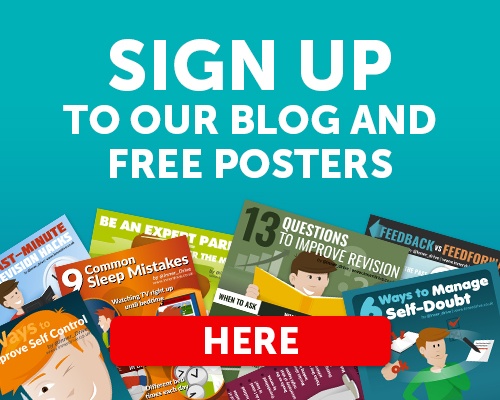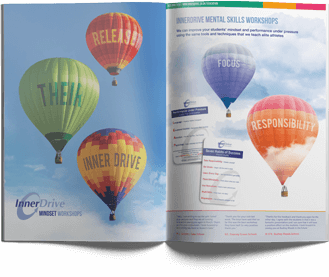Meetings are supposed to facilitate strategy development, teamwork and problem solving. Every day, there are between 11 million and 55 million meetings in the United States, and according to research, employees today spend an average of six hours in meetings every week.
Meetings clearly play a huge part in team discussions. They set out to create an environment where a team can address goals, problems, and new ideas. But unfortunately, this is not always the case.
Research has shown that, when done incorrectly, meetings can result in more employee fatigue, worse attitudes and reduced team productivity. And this effect is huge. In fact, if we assume that a modest 15% of meetings are ineffective, we can estimate that organisations waste $213 billion on meetings per year, and that’s the cost on the US economy alone.
So what mistakes are we making when we have meetings at work? And how can we make meetings more effective?
What is meeting science?
Meetings are an integral part of running any company. Essentially, they let employees know how an organisation operates and what is going on within the teams in a business.
Meeting science looks at what happens before, during and after a meeting in the workplace. Researching the effects of meetings, how best to design them, and how to use them informs a wide range of teams and businesses about how they can operate effectively.
What does the research on meeting science say?
Anyone who has worked as part of a team knows what it feels like to have a good meeting. They make you feel productive, prompt collaboration and problem solving, all within a reasonable amount of time.
But, not all meetings are equal. Let’s take a closer look at some common mistakes that are made in meetings…
1. Spending too much time in meetings
Research has shown that going to more meetings, particularly bad meetings, leads to more employee fatigue and a higher perceived workload.
2. Coming to the meeting unprepared
Not preparing for the meeting leads to employees perceiving the meeting as less effective, so setting up expectations is important.
3. Starting a meeting late
People may become increasingly frustrated when waiting for a late team member. Being late to a meeting has been shown to negatively impact people’s attitudes towards:
- The meeting itself
- Group interactions during the meeting
- Group performance after the meeting
4. Being too serious
Research has shown that patterns of humour and laughter in meetings were related to good team performance, both immediately and after 2 years. The effects of humour included:
- Less stress
- Less conflict
- More effective communication
- Better meeting structure
- Promoted new solutions
This effect was only true when people showed no concern about the future stability of their job.
5. Complaining and criticising others
This study suggests that when team members complained and criticised others during meetings, there was a decrease in:
- Team and organisational success
- Meeting satisfaction
- Team productivity
6. Not having a debrief
Debriefs usually encourage reflection, giving team members feedback and tips for future improvement. Post-incident discussions can be used to increase individual and team performances by between 20 and 25%.
if there are so many negatives, do we need meetings at all?
Meetings serve a critical purpose – if they are done well. Generally, meetings set out to achieve four main goals. They allow us to:
- Share the latest information and updates with the team.
- Problem-solve any internal or external issues and make decisions to implement solutions.
- Develop organisational strategy by giving direction to the business and giving ideas on how to maintain and implement changes.
- Debrief the team after a client or event to learn from what went well and how to avoid future mistakes.
These goals are essential to running any organisation. Now that we know what mistakes we may have been making, we can design more effective and efficient meetings using research on meeting science.
How can we make the most out of our meetings?
The meeting problem can be tackled at three different stages:
- Before the meeting – This involves the design and structure of the meeting.
- During the meeting – This involves the role of meeting leaders, attendees and their interactions.
- After the meeting – This involves considerations for future actions and outcomes of decisions made.
Here are some tips that can be applied at each stage.
Before the meeting…
- Ask yourself if the meeting is necessary – Many meetings occur simply as routine, for the purpose of sharing non-urgent information. These types of meetings often don’t involve problem solving, decision making or discussions and should be avoided.
- Decide who needs to attend the meeting – Meeting leaders should invite relevant people to meetings, considering whether their presence are necessary for the meeting. Research has shown that employees who felt that meetings were relevant to them had a greater sense of meaningfulness and engagement.
- Circulate and go over a written agenda before the meeting – This allows team members to make all the necessary preparations before the meeting, and allows them to set up expectations.
- Start and end the meeting on time – Avoid employee fatigue and higher perceived workloads by starting meetings on time as much as possible. Research suggests that team leaders may even be able to increase employee engagement when meetings are short and relevant.
During the meeting...
- Contribute as much as you can – Research suggests that high performing employees participate more during team meetings by facilitating group discussion, problem solving, setting goals and asking for feedback.
- Avoid complaining – Complaining in meetings, or being negative about problem solving, may induce even more complaining and negativity, whereas suggesting solutions prompt more problem solving.
- Lighten up – Research suggests that humour and laughter patterns in meetings encourage behaviours such as problem solving and communication.
After the meeting…
- Send meeting minutes – This ensures that goals, decisions made and designated roles and responsibilities of each person are clear.
- Ask for feedback – Meeting leaders may also want to ask for feedback to recognise whether a meeting went well or not, and to inform future meeting designs.
- Reflect on past events and incidents – Talking about what went well and what could have gone better after a presentation, client meeting or any other event boosts self-reflection and can increase team performance.
Final Thoughts
Designing, facilitating and attending an effective meeting involves many factors. Research suggests that these include being prepared, being on time, not complaining, reflecting, and being time effective.
Meetings are essential to effective communication within any organisation. For this reason, we cannot abolish meetings altogether. The solution to the meeting problem is not to get rid of meetings altogether, but to design them in an effective and efficient way using the research on meeting science.






